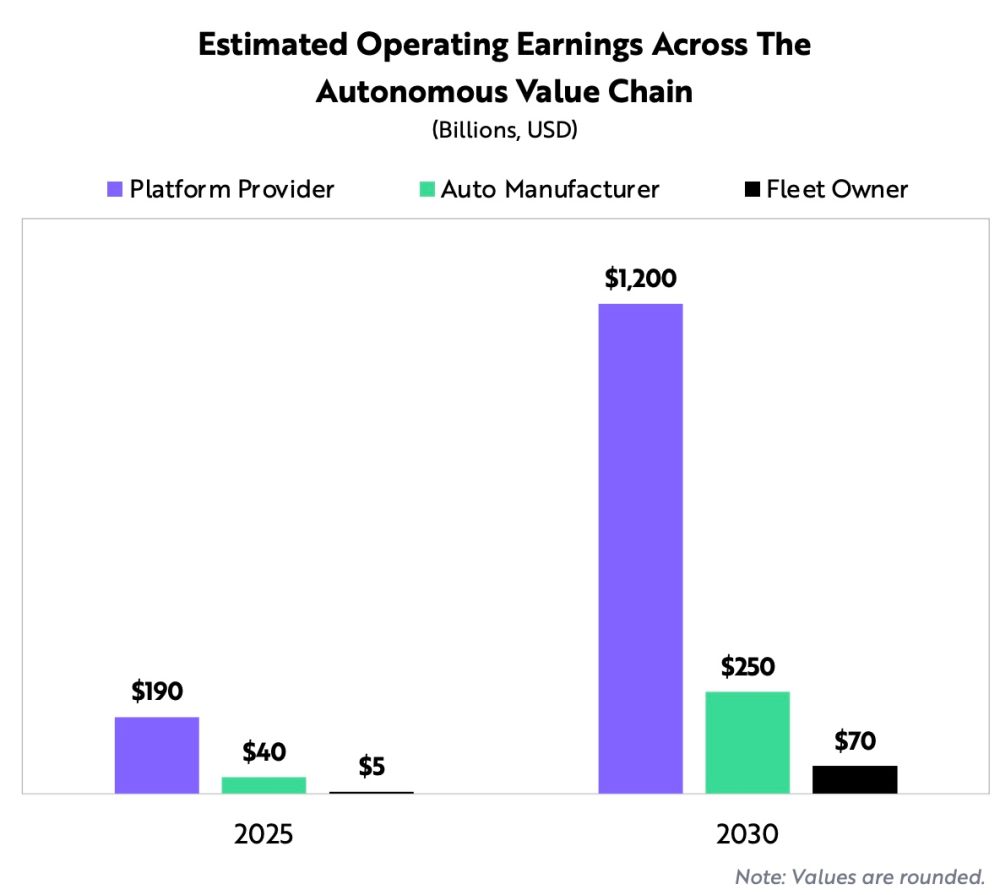Tesla (TSLA) is looking at a more-than-decent chunk of a market valued at $1.2 trillion with its upcoming Tesla Network, a new Uber-like ride-hailing service with autonomous electric cars, according to Ark Invest.
For years, Tesla has taunted a ride-hailing app to be powered by its self-driving system. It’s been dubbed the “Tesla Network.”
The new product is dependent on Tesla solving computer vision to deploy its full self-driving system.
In case it does happen, which CEO Elon Musk has been claiming it will this year, investors have been trying to value the extremely disruptive new product.
Ark Invest, a Tesla shareholder, has been trying to put some numbers on the value potential of such a service in its Big Ideas 2021 report.
The group believes that autonomous ride-hailing platforms will generate over $1 trillion in earnings by 2030:

Now the big question is, Who is going to take the bigger share of this insanely large market?
Ark agrees with Musk that Tesla’s vision-based approach is the most scalable one:
Tesla’s approach is camera-based. With less accurate sensors than LiDAR, making the path
to full autonomy a more difficult problem to solve, cameras do not rely on HD maps and should enable a much more scalable service. Tesla’s could be the first autonomous taxi network to scale nationally.
While competitors like Waymo have already launched commercial autonomous ride-hailing services, they believe that the approach is too difficult to scale and will limit the growth:

However, Ark is not as optimistic as Musk when it comes to Tesla launching this service anytime soon. In the report, Ark assigns a 30% probability of Tesla launching its autonomous ride-hailing service in 2022.
But if it does happen, Tesla will take over the market a lot faster:
If Tesla launches its autonomous ride-hailing service successfully in 2022, Ark estimates adoption could approach 20% by 2025. If Waymo or GM is successful, adoption probably will be limited to 1% during the next five years.
The group believes that many are underestimating the impact of autonomous ride hailing, which could undercut human-driven ride hailing by 90% in the US and 50% in China.
Ark estimates a cost of 25 cents per mile for the consumer, which would drastically reduce the cost of personal transportation and expand the market.
Electrek’s Take
In general, I tend to agree.
With every cent per mile that you can shave off the cost of transportation, you drastically increase the market, and autonomous electric vehicles would shave off a few dozen cents per mile.
It will have an extremely disruptive impact on the entire transportation industry.
Most experts currently see Waymo and Cruise as leaders due to their autonomous services are already in operation in San Francisco and Phoenix.
Tesla is not too worried about that because it always believes that its vision-based strategy would enable them to leapfrog those companies who will have a much tougher time expanding the service to other markets. That’s because they require extensive mapping and maintenance of new markets before launching.
But there’s a lot of doubts around Tesla actually solving the vision problem.
I think Ark’s 30% probability is a safe assumption for now, but that might change after we see Tesla FSD v9 in just a few weeks.
FTC: We use income earning auto affiliate links. More.
Subscribe to Electrek on YouTube for exclusive videos and subscribe to the podcast.